The Best Skinny Fat Exercise, According to Science
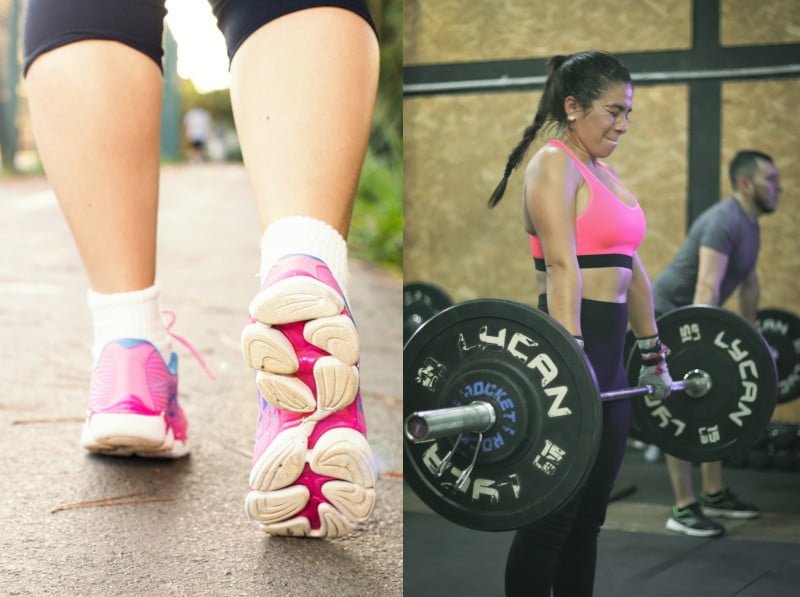
Scientifically, the best skinny fat diet (78, 53) is Mediterranean low carb, but what is the best skinny fat (lack of genetic muscle)(82) exercise according to science? The best skinny fat exercises are those that help you safely and sustainably lose regular white/yellow fat and build and maintain muscle mass.
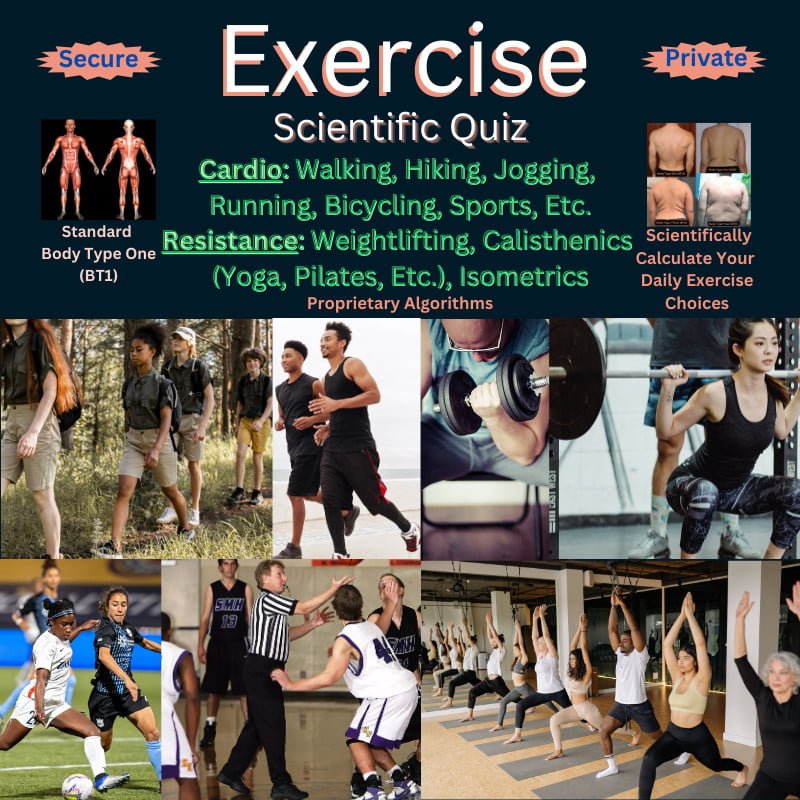 The gold standard cardio exercise is walking (1, 2). While the gold standard resistance exercise is weightlifting (3, 4). Of course, there are many other viable exercises from which to choose — the Scientific Exercise Quiz Health Score uses the latest science-based MET Values (measured metabolic equivalent)(5, 6, 7, 8) for a comprehensive list of cardio and resistance exercises to accurately calculate your unique metrics. Finding a proper balance between cardio and resistance exercise is the key to sustainable long-term success when it comes to successfully managing your unique genetic body composition — muscle/mass tissue, regular white/yellow fat tissue, and skinny fat tissue (thin fat, cellulite) — and weight (regular fat and muscle mass).
The gold standard cardio exercise is walking (1, 2). While the gold standard resistance exercise is weightlifting (3, 4). Of course, there are many other viable exercises from which to choose — the Scientific Exercise Quiz Health Score uses the latest science-based MET Values (measured metabolic equivalent)(5, 6, 7, 8) for a comprehensive list of cardio and resistance exercises to accurately calculate your unique metrics. Finding a proper balance between cardio and resistance exercise is the key to sustainable long-term success when it comes to successfully managing your unique genetic body composition — muscle/mass tissue, regular white/yellow fat tissue, and skinny fat tissue (thin fat, cellulite) — and weight (regular fat and muscle mass).
No matter which cardio (aerobic) and resistance (anaerobic) exercise you choose, consistency and regularity are the keys to safely, sustainably, and successfully reducing and managing skinny fat in the long run. Consistency is how often — how many days per week — you exercise on average. Regularity is how intense your daily workouts are along with typical duration (minutes), on average.
Best Skinny Fat Exercise – How Much Exercise is Healthy?
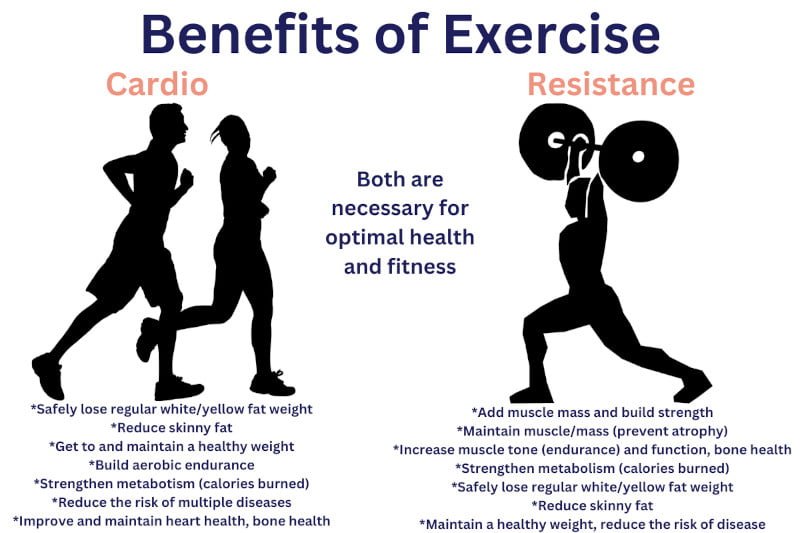
A typical recommended healthy daily cardio duration is between 30 minutes and 60 minutes (one hour) or so at moderate intensity, no less than 150 minutes (73, 74, 9, 10), 3 to 5 days per week, perhaps 6 if done right. And no more than 300 minutes (11, 12, 73, 74) for the average person (excluding amateur and pro athletes), which can help maintain and possibly even build some muscle mass (13, 14, 15, 16). Between 5,000 (56, 57) and 10,000 (58, 59) steps per day is a solid goal. Or 75 to 150 minutes at intense/vigorous intensity.
Maximum Total Exercise Per Week
For resistance exercise like weight lifting, 30 to 60 minutes or so (4, 73, 74), 2 to 5 days (maybe 6 if done right) per week at moderate intensity, 150 minutes to no more than 300 minutes (11, 12, 73, 74) total — properly rotating muscle groups and allowing the body to heal — is recommended for the average person (excluding amateur and pro athletes) to build muscle mass and maintain it. Or 15 to 60 minutes or so, 2 to 5 days (perhaps 6 if done right) per week at intense/vigorous intensity, 75 to 150 minutes total.
Thus, a total maximum of no more than 600 minutes (73, 74, 11, 12) of total moderate cardio and resistance exercise per week. Or no more than 300 minutes combined of both intense/vigorous cardio and resistance.
Remember, the human body typically needs one day, at least, of rest each week. Just as it is possible to do too little exercise and experience a slower metabolism (fewer calories burned) and metabolic syndrome (insulin hormone resistance) (17, 18, 39), it is possible to do too much exercise (you can’t out-exercise a bad diet (65, 66)) which can lead to a slower metabolism via overtraining syndrome (OTS/burnout)(insulin resistance)(19, 20, 21, 22, 23) and hinder regular fat weight loss and maintenance along with health goals.
How Does the Human Body Burn Calories?
Glycogen (61, 62, 63, 64), calories stored in your skeletal muscles and liver, is the first to burn when exercising.
The next to burn are dietary calories (food and drink) consumed (67, 68, 69), which are converted into glucose. When you run out of stored glycogen and glucose from dietary intake, the next to burn is stored calories from regular fat – AKA white/yellow body fat/adipose tissue.
If you run out of all three of those (you are inappropriately starving your body), your body will then begin to burn (68, 69, 67) priceless genetic default muscle/mass (or excess added muscle mass, if you have any). Do not inappropriately starve your body. The human body does not casually and arbitrarily burn genetic default muscle/mass. It will only do so if you are denying it the resources it needs, including enough quality protein.
Cardio Intensity (Aerobic Exercise)

The five general levels of cardio intensity (24, 25, 60, 9, 10, 81) are:
Minimal Cardio is less than 40 steps per minute (15 minutes is a max 585 steps, 30 minutes is 1170 steps, 45 minutes is 1755 steps, 60 minutes is 2340 steps, 75 minutes is 2925 steps), or the equivalent
Very Light Cardio is 40 to 69 steps per minute (15 minutes is a minimum of 600 steps, 30 minutes is 1200 steps, 45 minutes is 1800 steps, 60 minutes is 2400 steps, 75 minutes is 3000 steps), or the equivalent
Light Cardio is 70 to 99 steps per minute (15 minutes is a minimum of 1050 steps, 30 minutes is 2100 steps, 45 minutes is 3150 steps, 60 minutes is 4200 steps, 75 minutes is 5250 steps), or the equivalent
Moderate Cardio is 100 to 129 steps per minute (15 minutes is a minimum of 1500 steps, 30 minutes is 3000, 45 minutes is 4500 steps, 60 minutes is 6000 steps, 75 minutes is 7500 steps), or the equivalent
Intense Cardio is 130 or more steps per minute (15 minutes is a minimum of 1950 steps, 30 minutes is 3900 steps, 45 minutes is 5850 steps, 60 minutes is 7800 steps, 75 minutes is 9750), or the equivalent
Bicycling, Elliptical, Rowing/Rowing Machine, Sports, Stationary Bike, Swimming, Workout Classes (HIIT, Zumba, etc.) and the Like
Intensity (minimal, very light, light, moderate, intense) is determined by incline/grade/resistance, speed/pace, gear, and/or duration, no less.
Resistance Intensity (Anaerobic Exercise) – Weightlifting

As well, the five general levels of resistance intensity (26, 80) include:
Minimal is 1-2 pounds, 1-8 reps or more per set, or the equivalent,
Very Light is 3-5 pounds, 4-12 reps or more per set), or the equivalent,
Light is 6-10 pounds, 4-12 reps or more per set, or the equivalent,
Moderate is 11 to 20 pounds or more, 4-12 reps or more per set and sometimes maxing out weight, which is fewer reps, or the equivalent, and
Intense is no less than 21 to 40 pounds or more, 4-12 reps or more per set and/or regularly maxing out weight, which is fewer reps, or the equivalent.
Bulking (76, 80) = adding muscle mass (growth/hypertrophy) through “mechanical tension” via “effective reps” — IE typically moderate weight and moderate reps (8-12). Involves the moment your reps begin to naturally slow down as you approach muscle failure. Includes increased dietary (53) needs.
“Tone/Toning” (Muscular Endurance)(77) = generally lower weight and more reps to improve muscle appearance. You cannot tone muscle you do not have (skinny fat).
Cutting = losing regular white/yellow body fat (common adipose tissue); you can bulk/tone and cut at the same time, especially eating a proper low-carb diet (no calorie deficit required to avoid muscle tissue loss, no less)(78, 79),
Calisthenics, Yoga, Pilates, Isometrics Intensity
Intensity (minimal, very light, light, moderate, intense) is determined by whether the exercise(s)/pose(s) is standing, sitting, prone, or supine relative to duration, length of hold, number of reps, added weight, incline or decline, posture, breath control, and/or the connection of posture through breath and movement, no less.
Unique Genetic Body Composition – Metabolism and Metabolic Rate
Your unique genetic body composition directly affects your exercise and regular fat weight loss efforts. In terms of metabolism (calories burned), science currently recognizes that one pound of muscle/mass burns (27, 28) roughly 6 calories per day. Whereas, one pound of regular fat and/or skinny fat only burns (28, 27) roughly two to three calories per day. The more skinny fat and/or regular fat you have on your body, the slower your metabolism and the fewer calories you burn at rest or when active. But the more muscle/mass you have, the stronger your metabolism and the more calories you burn at rest and when active.

The more consistent and regular you are with your cardio and resistance exercise (but NOT too much or too little as it can lead to a slower metabolism and metabolic or overtraining syndrome) throughout the week, the more it positively affects maximal oxygen uptake (V̇O2max)(29) and increases metabolic rate (30, 31, 32, 33, 34, 35, 36, 37, 38, 39, 40) by no less than 5 to 10% (70, 71, 72) and depending on intensity and duration (along with diet, other exercises/activity, and lifestyle) maybe more, to burn more calories.
Added Muscle Mass Increases Metabolism
Moreover, the more muscle mass you add above and beyond your original genetic default muscle/mass, the stronger your metabolism and the more calories you burn to help with regular fat weight loss and management. Both resistance and cardio exercise, particularly proper amounts of vigorously intense, offer positive afterburn (41, 42, 43, 44) — AKA excess post-exercise oxygen consumption (EPOC) which is post-workout calorie burn — effects as well as including potentially up to 37% increased calorie burn over 12 or so hours. Properly combining aerobic exercise (cardio) with anaerobic training (resistance) can maximize regular fat weight loss (visceral and subcutaneous), reduce skinny fat (subcutaneous), and build and maintain lean muscle mass, no less.
All things considered, the positive effects that proper exercise has on metabolism — the Standard BMR (basal metabolic rate, minimum calories required daily for basic functions at rest), RMR (resting metabolic rate, minimum calories per day with minimal activity) (45), and TDEE (Total Daily Energy Expenditure, total daily calories including all activity, exercise, and functioning)(46, 47) — are scientifically obvious. Balanced exercise is conducive to healthy aging and longevity (48, 49, 50).
Types of Cardio and Resistance – Best Skinny Fat Exercises

There are many types of viable cardio and resistance exercises. What is best for you is determined by what you will and can do regularly and consistently. If you look carefully and focus on certified professionals, there are plenty of useful videos on YouTube and such that will support your workout efforts.
Cardio Exercises (Aerobic Exercise):
walking, hiking, jogging, running, treadmill, elliptical, swimming, stair machine, bicycling, stationary bike, rowing machine, sports (soccer, football, basketball, baseball, volleyball, lacrosse, tennis, pickleball, racquetball, etc.), workout classes (varies like dance, HIIT, aerobics, Zumba, etc), and the like can all be good choices.
Resistance Exercises (Anaerobic Exercise):
weightlifting/weight training, yoga, Pilates, calisthenics, and isometrics.

Hand-in-hand with a well-chosen science-based diet and lifestyle, proper cardio and resistance exercise helps manage body composition to stay within a safe, healthy, “normal” Standard BMI. By helping you lose and maintain regular fat while adding or maintaining muscle mass, exercise contributes to keeping being overweight or obese at bay and reduces skinny fat (thin fat, cellulite), significantly raising the probability that you can safely, sustainably, and successfully maintain your health for the rest of your life.
Scientific Health Quizzes Including the Scientific Exercise Quiz Health Score
As mentioned, the Scientific Exercise Quiz Health Score (51) utilizes the latest scientific MET Numbers (5, 6, 7, 8) along with scientific data in a proprietary algorithm. You can choose from a full list of cardio and resistance exercises.
Along with the Scientific Body Type Quiz (Official) (52), Scientific Diet Quiz Health Score (53), Scientific Metabolism Quiz Health Score (54), and Scientific Lifestyle Quiz Health Score (55) relative to your unique genetic body composition, you can accurately calculate your unique metrics to assist with your regular fat weight loss efforts, maintaining and adding muscle mass, and reducing your skinny fat.
How Skinny Fat Affects Metabolism
References
- Harvard T.H. Chan School of Public Health: April 2023, Walking for Exercise. https://nutritionsource.hsph.harvard.edu/walking/
- Today Show: If all I do is walk for exercise, is that a good enough workout?, December 20, 2021 (Updated April 15, 2024), Stephanie Mansour. https://www.today.com/health/walking-good-exercise-t243534
- Healthline: 14 Benefits of Strength Training, August 16, 2021, Katey Davidson, MScFN, RD, CPT (Medically reviewed by Daniel Bubnis, M.S., NASM-CPT, NASE Level II-CSS, Fitness). https://www.healthline.com/health/fitness/benefits-of-strength-training
- Harvard T.H. Chan School of Public Health: Evidence mounts on the benefits of strength training. https://www.hsph.harvard.edu/news/hsph-in-the-news/strength-training-time-benefits/
- Healthline: What Exactly Are METs, and What Should You Know About Them?, October 21, 2019, James Roland. https://www.healthline.com/health/what-are-mets
- ScienceDirect: 2024 Adult Compendium of Physical Activities: A third update of the energy costs of human activities, January 2024, Stephen D. Herrmann, Erik A. Willis, Barbara E. Ainsworth, Tiago V. Barreira, Mary Hastert, Chelsea L. Kracht, John M. Schuna Jr., Zhenghua Cai, Minghui Quan, Catrine Tudor-Locke, Melicia C. Whitt-Glover,David R. Jacobs Jr. https://www.sciencedirect.com/science/article/pii/S2095254623001084
- NIH, National Library of Medicine: Metabolic equivalent of task (METs) thresholds as an indicator of physical activity intensity, January 19, 2018, Márcio de Almeida Mendes, Inácio da Silva, Virgílio Ramires, Felipe Reichert, Rafaela Martins, Rodrigo Ferreira, and Elaine Tomasi. https://pmc.ncbi.nlm.nih.gov/articles/PMC6053180/
- Wikipedia: Metabolic equivalent of task: https://en.wikipedia.org/wiki/Metabolic_equivalent_of_task
- NIH, National Library of Medicine: Walking Cadence to Exercise at Moderate Intensity for Adults: A Systematic Review, March 28, 2017, J. Slaght, M. Sénéchal, T. J. Hrubeniuk, A. Mayo, and D. R. Bouchard. https://www.ncbi.nlm.nih.gov/pmc/articles/PMC5387837/
- Science Daily: Moderate Intensity Walking Means 100 Steps Per Minute, March 21, 2009, Elsevier Health Sciences. https://www.sciencedaily.com/releases/2009/03/090317094719.htm
- CNBC: Exercise 2-4x more than the HHS recommends to achieve maximum benefit, says new study, August 30, 2022, Renée Onque. https://www.cnbc.com/2022/08/30/this-is-how-much-you-should-exercise-to-achieve-the-maximum-benefit.html
- American Medical Association: Massive study uncovers how much exercise is needed to live longer, January 23, 2024, Sara Berg, MS. https://www.ama-assn.org/delivering-care/public-health/massive-study-uncovers-how-much-exercise-needed-live-longer
- USA Today: Walking is great exercise, but will it build muscle? What to know, May 9, 2023 (Updated March 19, 2024), Daryl Austin. https://www.usatoday.com/story/life/health-wellness/2023/05/09/does-walking-build-muscle-benefits-toning-how-often-walk/70187880007/
- LiveScience: Does walking build muscle?,
- Shape: Build Muscle While You Walk? Yes, Please. Here’s the Secret, May 17, 2024, Sarah Garone, NDTR., https://www.shape.com/does-walking-build-muscle-8645667
- NIH, National Library of Medicine: Effects of 10-week walking and walking with home-based resistance training on muscle quality, muscle size, and physical functional tests in healthy older individuals, Akito Yoshiko, Aya Tomita, Ryosuke Ando, Madoka Ogawa, Shohei Kondo, Akira Saito, Noriko I. Tanaka, Teruhiko Koike, Yoshiharu Oshida, and Hiroshi Akima. https://www.ncbi.nlm.nih.gov/pmc/articles/PMC6240935/
- Cleveland Clinic: Metabolic Syndrome, September 13, 2023. https://my.clevelandclinic.org/health/diseases/10783-metabolic-syndrome
- WebMD: What is Metabolic Syndrome?, February 13, 2024, WebMD Editorial Contributors (Medically Reviewed by Michael Dansinger, MD). https://www.webmd.com/heart/metabolic-syndrome/metabolic-syndrome-what-is-it
- WebMD: What to Know About Overtraining, June 18, 2023, (Medically Reviewed by Ross Brakeville, DPT). https://www.webmd.com/fitness-exercise/what-to-know-about-overtraining
- Cleveland Clinic: Overtraining Syndrome, February 28, 2024. https://my.clevelandclinic.org/health/diseases/overtraining-syndrome
- NIH, National Library of Medicine: Overtraining Syndrome, March 2012. Jeffrey B Kreher and Jennifer B Schwartz. https://pmc.ncbi.nlm.nih.gov/articles/PMC3435910/
- The Scientist: Extreme Exercise Carries Metabolic Consequences: Study, March 23, 2021, Shawna Williams. https://www.the-scientist.com/extreme-exercise-carries-metabolic-consequences-study-68581
- Shape: How Much Exercise Is Too Much?, July 14, 2024, Gabrielle Kassel. https://www.shape.com/fitness/tips/how-much-exercise-is-too-much-over-training
- Washington Post: The Big Number: 100 steps a minute as an exercise goal, February 10, 2019, Linda Searing. https://www.washingtonpost.com/national/health-science/the-big-number-100-steps-a-minute-as-an-exercise-goal/2019/02/08/85b89d30-2aed-11e9-b2fc-721718903bfc_story.html
- Harvard Health Publishing: Walk this way, October 1, 2018. https://www.health.harvard.edu/heart-health/walk-this-way
- The National Strength and Conditioning Association (NSCA): FOUNDATIONS OF FITNESS PROGRAMMING, 2015, Nick Clayton, Joe Drake, Scott Larkin, Robert Linkul, Mike Martino, Mark Nutting, and Nick Tumminello. https://www.nsca.com/contentassets/8323553f698a466a98220b21d9eb9a65/foundationsoffitnessprogramming_201508.pdf
- Skinny Fat Science: How Skinny Fat Affects Metabolism, August 7, 2024. https://skinnyfat.fellowone.com/how-skinny-fat-affects-metabolism/
- Ace Fitness: The Role of Metabolism in Reaching Your Goals and Improving Your Fitness, October 20, 2015, Dominique Gummelt, PhD. https://www.acefitness.org/resources/everyone/blog/5695/the-role-of-metabolism-in-reaching-your-goals-and-improving-your-fitness/#:~:text=Even%20while%20at%20rest%2C%20your,only%20two%20calories%20a%20day.
- NIH, National Library of Medicine: Individual cardiovascular responsiveness to work-matched exercise within the moderate- and severe-intensity domains, April 3, 2021, Felipe Mattioni Maturana, Philipp Schellhorn, Gunnar Erz, Christof Burgstahler, Manuel Widmann, Barbara Munz, Rogerio N Soares, Juan M Murias, Ansgar Thiel, Andreas M Nieß. https://pubmed.ncbi.nlm.nih.gov/33811557/
- NIH, National Library of Medicine: The effects of weekly exercise time on VO2max and resting metabolic rate in normal adults, April 28, 2016, Mi-Na Gim, PT, MS1 and Jung-Hyun Choi, PT, PhD. https://www.ncbi.nlm.nih.gov/pmc/articles/PMC4868243/
- Healthline: The Top 10 Benefits of Regular Exercise, November 13, 2023, Arlene Semeco, MS, RD (Medically reviewed by Micky Lal, MA, CSCS,RYT). https://www.healthline.com/nutrition/10-benefits-of-exercise#muscles-and-bones
- NIH, National Library of Medicine: The effect of exercise interventions on resting metabolic rate: A systematic review and meta-analysis, May 12, 2020 (J Sports Sci. July 2020), Kristen MacKenzie-Shalders, Jaimon T Kelly, Daniel So, Vernon G Coffey, Nuala M Byrne. https://pubmed.ncbi.nlm.nih.gov/32397898/
- Runner’s World: How to Boost Your Metabolism According to Science, October 22, 2020, Selene Yeager. https://www.runnersworld.com/nutrition-weight-loss/a23412133/how-to-boost-your-metabolism/
- Livestrong: How Does Walking Increase Metabolism?, Frank Yemi. https://www.livestrong.com/article/160132-how-does-walking-increase-metabolism/
- NIH, National Library of Medicine: Impact of energy intake and exercise on resting metabolic rate, August 1990, P A Molé. https://pubmed.ncbi.nlm.nih.gov/2204100/
- WebMD: How to Boost Your Metabolism With Exercise, July 18, 2023, Stephanie Watson (Medically reviewed by Tyler Wheeler, MD). https://www.webmd.com/fitness-exercise/how-to-boost-your-metabolism
- EGYM: Top 10 Tips to Boost Your Metabolism and Increase Your Basal Metabolic Rate, https://egym.com/us/blog/boost-metabolism
- Healthline: The 3-Day Fix to Supercharging Your Metabolism, December 14, 2019, Deanna Debara, (Medically reviewed by Daniel Bubnis, M.S., NASM-CPT, NASE Level II-CSS, Fitness). https://www.healthline.com/health/how-to-reset-metabolism
- NIH, National Library of Medicine: Relation between usual daily walking time and metabolic syndrome, January-February, 2014, Jamshid Najafian, Noushin Mohammadifard, Farahnaz Fatemi Naeini, and Fatemeh Nouri. https://www.ncbi.nlm.nih.gov/pmc/articles/PMC4071659/
- NIH, National Library of Medicine: Resistance training is medicine: effects of strength training on health, July-August 2012, Wayne L Westcott. https://pubmed.ncbi.nlm.nih.gov/22777332/
- NIH, National Library of Medicine: A 45-minute vigorous exercise bout increases metabolic rate for 14 hours, September 2001, Amy M Knab 1 , R Andrew Shanely, Karen D Corbin, Fuxia Jin, Wei Sha, David C Nieman. https://pubmed.ncbi.nlm.nih.gov/21311363/
- University of New Mexico (UNM): Exercise After-Burn: Research Update, By Chantal A. Vella, Ph.D. and Len Kravitz, Ph.D. https://www.unm.edu/~lkravitz/Article%20folder/epocarticle.html
- NIH, National Library of Medicine: Effect of an acute period of resistance exercise on excess post-exercise oxygen consumption: implications for body mass management, January 29, 2002, Mark D Schuenke, Richard P Mikat, and Jeffrey M McBride. https://pubmed.ncbi.nlm.nih.gov/11882927/
- Healthline: 5 Workouts That Give You the Afterburn Effect, December 19, 2016, Nicole Bowling, CPT (Medically reviewed by Peggy Pletcher, M.S., R.D., L.D., CDE). https://www.healthline.com/health/fitness-exercise/afterburn-effect-workouts
- WebMD: Differences Between BMR and RMR, June 18, 2023, Medical reviewed by Ross Brakeville, DPT. https://www.webmd.com/fitness-exercise/difference-between-bmr-and-rmr
- Forbes: TDEE Calculator: Calculate Your Total Daily Energy Expenditure, Alena Hall (Fact check by Jessica DiGiacinto). https://www.forbes.com/health/nutrition/tdee-calculator/
- NIH, National Library of Medicine: Physical Activity Energy Expenditure and Total Daily Energy Expenditure in Successful Weight Loss Maintainers, March 27, 2019, Danielle M. Ostendorf, Ann E. Caldwell, Seth A. Creasy, Zhaoxing Pan, Kate Lyden, Audrey Bergouignan, Paul S. MacLean, Holly R. Wyatt, James O. Hill, Edward L. Melanson, and Victoria A. Catenacci1. https://www.ncbi.nlm.nih.gov/pmc/articles/PMC6392078/
- NIH, National Library of Medicine: Exercise in Aging: Be Balanced, August 1, 2021, Joanna Gronek, Michał Boraczyński, Piotr Gronek, Dariusz Wieliński, Jacek Tarnas, Sławomir Marszałek, and Yi-Yuan Tang. https://www.ncbi.nlm.nih.gov/pmc/articles/PMC8279522/
- Mayo Clinic Press: How physical activity keeps you young: Playing recreational sports for a longer, healthier life, April 1, 2024, Sara Youngblood Gregory (Medically reviewed by Nathan K. LeBrasseur, Ph.D.). https://mcpress.mayoclinic.org/healthy-aging/how-physical-activity-keeps-you-young-playing-recreational-sports-for-a-longer-healthier-life/
- Skinny Fat Science: How Skinny Fat Affects Aging & Longevity, October 2, 2024. https://skinnyfat.fellowone.com/how-skinny-fat-affects-aging-longevity/
- Fellow One Research: Scientific Exercise Quiz Health Score: https://scientificbodytypequiz.fellowone.com/product/scientific-exercise-quiz-health-score/
- Fellow One Research: Scientific Body Type Quiz (Official). https://scientificbodytypequiz.fellowone.com/product/scientific-body-type-quiz-official/
- Fellow One Research: Scientific Diet Quiz Health Score. https://scientificbodytypequiz.fellowone.com/product/scientific-diet-quiz-health-score/
- Fellow One Research: Scientific Metabolism Quiz Health Score: https://scientificbodytypequiz.fellowone.com/product/scientific-metabolism-quiz-health-score/
- Fellow One Research: Scientific Lifestyle Quiz Health Score. https://scientificbodytypequiz.fellowone.com/product/scientific-lifestyle-quiz-health-score/
- BBC: Fitness: Fewer than 5,000 steps a day enough to boost health – study, August 8, 2023, Annabel Rackham, https://www.bbc.com/news/health-66440424
- Harvard T.H. Chan School of Public Health: Far fewer than 10,000 steps per day can boost health, 2021. https://www.hsph.harvard.edu/news/hsph-in-the-news/far-fewer-than-10000-steps-per-day-can-boost-health/
- MedicalNewsToday: How many steps should people take per day?, August 20, 2024, Jennifer Huizen (Medically reviewed by Marie Lorraine Johnson MS, RD, CPT). https://www.medicalnewstoday.com/articles/how-many-steps-should-you-take-a-day
- Newsweek: Is 5,000 Steps a Day Enough? Scientists Weigh In, February 17, 2024, Pandora Dewan Senior Science Reporter. https://www.newsweek.com/walking-steps-exercise-health-science-1870251
- Runner’s World: How to Make Your Non-Running Steps Worth Your Time, March 29, 2019, Jordan Smith. https://www.runnersworld.com/news/a26972526/walking-speed-health-benefits/
- Cleveland Clinic: Glycogen, July 13, 2022. https://my.clevelandclinic.org/health/articles/23509-glycogen
- NIH, National Library of Medicine: The Role of Skeletal Muscle Glycogen Breakdown for Regulation of Insulin Sensitivity by Exercise, December 30, 2011, Jørgen Jensen, Per Inge Rustad, Anders Jensen Kolnes, and Yu-Chiang Lai. https://pmc.ncbi.nlm.nih.gov/articles/PMC3248697/#:~:text=Skeletal%20muscles%20are%20the%20tissue%20that%20transforms,et%20al.%2C%201967;%20Romijn%20et%20al.%2C%201993).
- Nature, Metabolism: Skeletal muscle energy metabolism during exercise, Mark Hargreaves and Lawrence L. Spriet. https://www.nature.com/articles/s42255-020-0251-4
- NIH, National Library of Medicine: Fundamentals of glycogen metabolism for coaches and athletes, February 10, 2018, Bob Murray and Christine Rosenbloom. https://pmc.ncbi.nlm.nih.gov/articles/PMC6019055/
- ScienceDirect: Scientists Say They’ve Figured Out Why Exercise on Its Own Won’t Make You Lose Weight, January 29, 2016, Fiona MacDonald. https://www.sciencealert.com/exercise-on-its-own-won-t-make-you-lose-weight-and-scientists-have-finally-shown-why
- Washington Post: Exercising to lose weight? Science says it rarely works, November 27, 2024, Gretchen Reynolds. https://www.washingtonpost.com/wellness/2024/11/27/exercise-weight-loss-science/
- Livestrong: Do You Burn Fat or Muscle First When Exercising?, December 8, 2023, Kristin Jenny (Reviewed by KJ Kroetch, CPT). https://www.livestrong.com/article/471359-which-burns-first-fat-or-muscle/
- NIH, National Library of Medicine: Preserving Healthy Muscle during Weight Loss, May 5, 2017, Edda Cava, Nai Chien Yeat, and Bettina Mittendorfer. https://pmc.ncbi.nlm.nih.gov/articles/PMC5421125/
- NIH, National Library of Medicine: Weight Loss Strategies and the Risk of Skeletal Muscle Mass Loss, July 20, 2021, David McCarthy and Aloys Berg. 2https://pmc.ncbi.nlm.nih.gov/articles/PMC8308821/
- Healthline: 6 Mistakes That Slow Down Your Metabolism, November 27, 2023, Franziska Spritzler (Medically reviewed by Jared Meacham, PhD., RD, CSCS). https://www.healthline.com/nutrition/6-mistakes-that-slow-metabolism#TOC_TITLE_HDR_3
- NIH, National Library of Medicine: Impact of energy intake and exercise on resting metabolic rate, August 1990.
- ScienceDirect, The American Journal of Clinical Nutrition: Physical activity as a metabolic stressor, August 2000, Volume 72, Issue 2, Pages 512S-520S, Edward F Coyle. https://www.sciencedirect.com/science/article/pii/S0002916523067291
- American Medical Associaton: Massive study uncovers how much exercise is needed to live longer, January 23, 2024, Sara Berg, MS. https://www.ama-assn.org/delivering-care/public-health/massive-study-uncovers-how-much-exercise-needed-live-longer
- American Heart Association: American Heart Association Recommendations for Physical Activity in Adults and Kids. https://www.heart.org/en/healthy-living/fitness/fitness-basics/aha-recs-for-physical-activity-in-adults
- Harvard Health Publishing: Resistance training by the numbers, March 1, 2021. https://www.health.harvard.edu/staying-healthy/resistance-training-by-the-numbers
- Healthline: What Is Bulking? Steps, Diet, and More, February 6, 2020, Gavin Van De Walle, MS, RD (Medically reviewed by Grant Tinsley, Ph.D., CSCS,*D, CISSN, Nutrition). https://www.healthline.com/nutrition/bulking
- NASM: Toning vs. Bulking Up: What’s The Difference?, Jeff Thaxton. https://blog.nasm.org/toning-vs-bulking-up
- Skinny Fat Science: The Best Skinny Fat Diet, According to Science, July 29, 2024. https://skinnyfat.fellowone.com/skinny-fat-science/the-best-skinny-fat-diet-according-to-science/
- Healthline: 23 Studies on Low Carb and Low Fat Diets — Time to Retire the Fad, March 24, 2020, Kris Gunnars, BSc (Medically reviewed by Atli Arnarson BSc, PhD). https://www.healthline.com/nutrition/23-studies-on-low-carb-and-low-fat-diets
- GQ, Wellness: How to Actually Build Muscle When You Work Out, March 26, 2025, Dean Stattmann. https://www.gq.com/story/how-to-actually-build-muscle-when-you-work-out-1/
- The Independent: Four science-backed ways to make your daily walk even better for your health, March 23, 2025, Harry Bullmore. https://www.independent.co.uk/health-and-fitness/increase-health-benefits-of-walking-b2719404.html/
- Skinny Fat Science: What is Skinny Fat?, July 26, 2024. https://skinnyfat.fellowone.com/skinny-fat-science/what-is-skinny-fat/
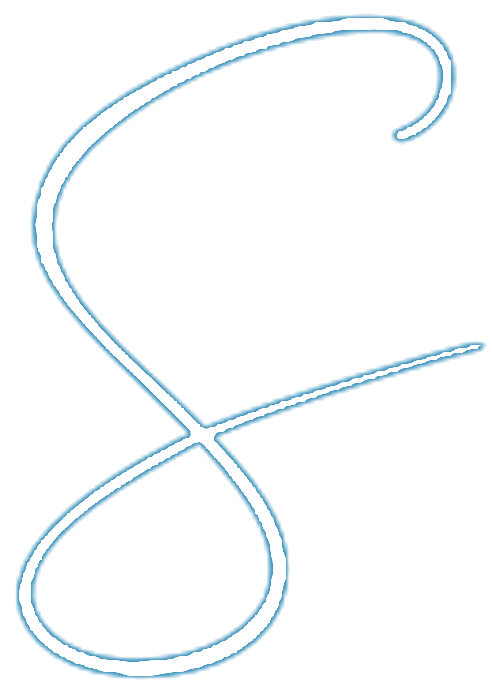

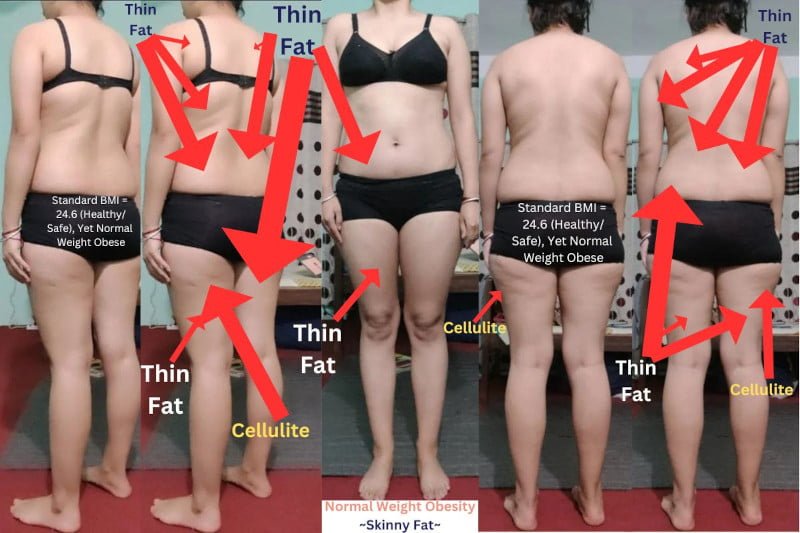
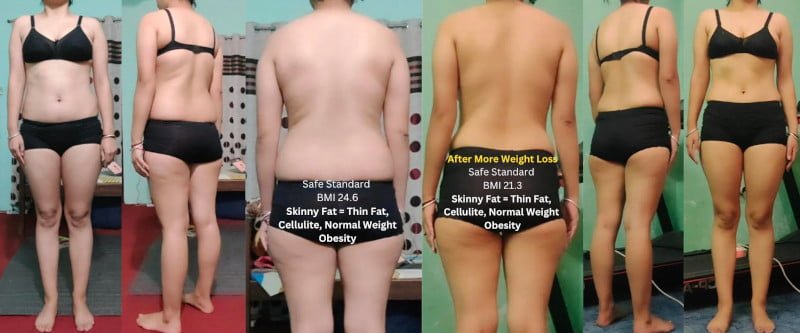
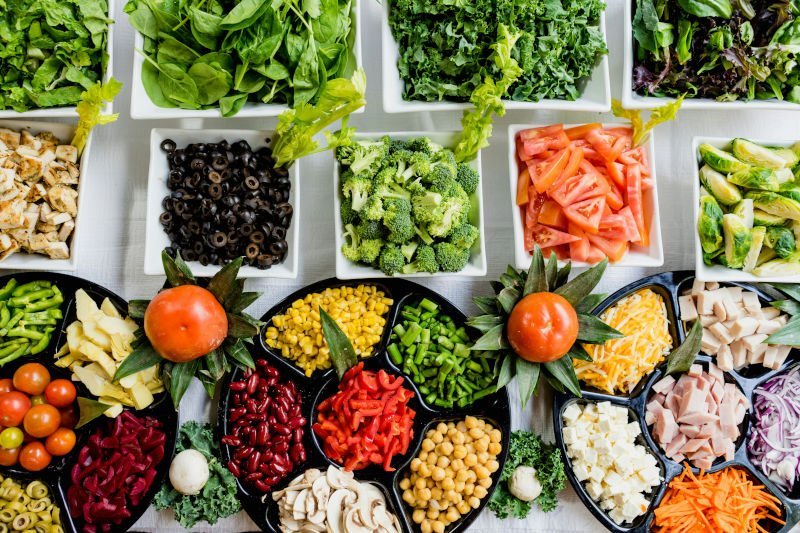



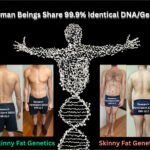

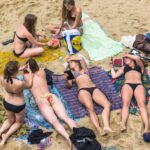


A very educational scientifically referenced page about how to maintain a healthy balance between cardio and resistance exercise, with easy-to-understand language. Thanks for explaining the effect that exercise has on metabolism and weight loss.
Let us know if you have any questions.